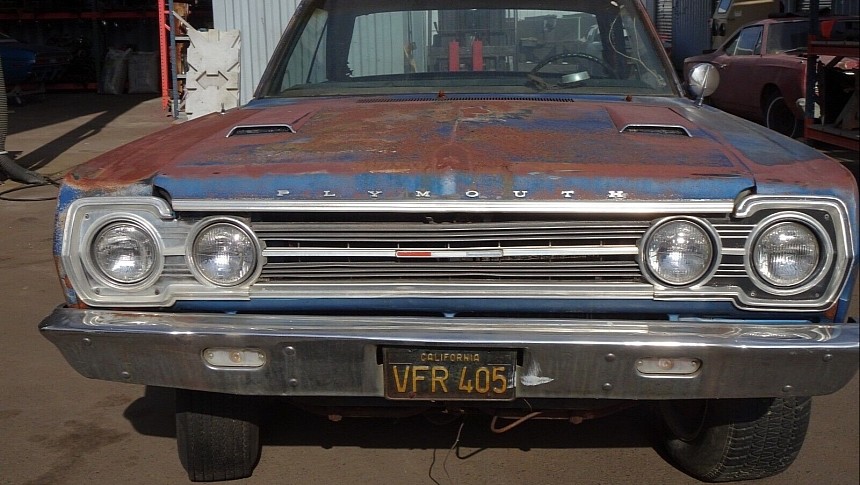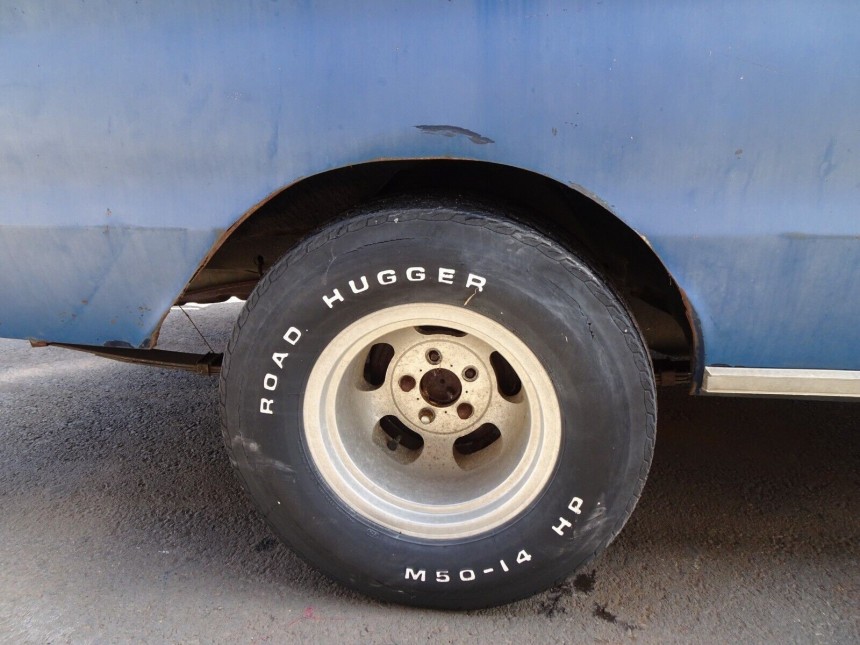In 1966, Chrysler let the HEMI loose on the streets, casting some 3,350 big-blocks to sport hemispherical heads to tickle NASCAR’s ego. The engine almost wouldn’t have come to be, had it not been for an engineering lesson learned the ‘race way’ by Mother Mopar. In the early 60s, the Max Wedge engine was getting pounded by Pontiacs and Chevrolets in NASCAR, and an emergency task force was appointed to make things right.
As it turns out, the small team of six men didn’t straighten things out at all but instead went the opposite way, conceiving a very curvaceous dome shape for the cylinder heads to optimize airflow in the combustion chambers. The Race HEMI was born – and it wouldn’t take long before the monstrosity V8 became the apex predator on the speedways. The first three cars at the Daytona 500 in 1964 were Mopars equipped with the new powerplant.
However, there was an issue – to run under the NASCAR rule book, the engine had to have a street-going version. That happy piston miracle befell upon the car universe in 1966 – the most prolific year for the engine’s production. In a short six-year life, some 11,000 V8s with hemispherical heads fell between the front fenders of various Mopars, from the most nefarious Chargers, Challengers, and ‘Cudas to average-Joe Road runners and GTXs.
The last name arrived in the vast picture of Chrysler products one year after the HEMI hit the streets in 1967, and it was a range-topping trim level of the Plymouth Belvedere II. The first generation lasted precisely one model year, as 1968 saw the GTX sitting at its own table. Being a B-body meant the first-year GTX was entitled to receive the 426 cubic inches of honor reserved for that platform in its first year on the market.
The GTX came standard with the 440 cubic-inch V8 (the 7.2-liter Raised Block), and the HEMI was the alternative. As Plymouth's single offer for performance in the intermediate-sized segment, the GTX was also the first muscle car built on that platform. Sure, from a book-keeping perspective, the Belvedere IIs got the HEMI in 1967, but the dozen or so assembled don’t really make any difference in the overall picture.
Chrysler touted the automobile as ‘the most exciting Supercar to come out of Detroit in years’ and reserved the 440 CID engine for the GTX (among the B-bodied Plymouths). 12,690 GTXs came out in the sub-model’s inaugural year, with only 733 sporting the high-revving HEMI. Naturally, those low numbers make the cars that have made it to 2023 highly desirable for collectors.
And, unlike other Mopars that ask obscenely high prices for little more than an overdose of rust and scrap iron, the GTXs can be obtained for decent sums. Look at the example featured in the photo gallery – an original first-year GTX with the matching numbers powertrain. The Californian climate (where the car started its road adventure) was kind to this one-year-only Plymouth, but it left scars on the roof, trunk, and floor. Also, at some point, someone decided it would be a good idea to expand the rear wheel arches using metal shears.
The car would make a good foundation for a restoration project, especially considering that the engine and TorqueFlite three-speed automatic transmission have been rebuilt. That’s also why the V8 and its gearbox are not in the car. The 8 ¾ rear diff comes with the Plymouth-recommended 3.23 gearing with Sure-Grip (Chrysler’s suggestion for the ‘best GTX performance’).
However, the car comes with a lot of rust, especially on the roof – a separate top is available for DIY-ers, should one wish to reinstate this GTX to its full HEMI rights. When it left the factory, the automobile wore a blue coat over a black interior, bucket seats, and power disc brakes. Regarding the powertrain, the intake and exhaust manifolds, the dual four-barrel carburetors, the valve covers, the air filter, and the distributor are all correct.
This Plymouth is still wearing the sheet metal welded by the factory – minus the cutaways above the rear wheels. The car is for sale, should anyone feel like bringing it back to road-worthiness, and it comes with a separate list of accessories – including the patches for the quarter and wheelhouse for one side (the seller doesn’t mention for what side, but it doesn’t make a difference).
This scarred Mopar has new interior door trim panels, seat kits, and wiring harnesses. The exciting aspect is that the seller offers to restore the car – for what money? It’s up to the buyer to negotiate. The booster for the power brakes – the original-to-the-car unit – and the disc brakes are ‘very restorable.’ Take that last statement either way – the parts are in good shape, or the seller wasn’t to get more money out of this car than its sale value.
The current bid of $21,600 isn’t enough to get a new title with a new owner's name on it, and the reserve is above this threshold. You can see it here on eBay or in Springfield, Oregon if you can talk the seller into an inspection.
However, there was an issue – to run under the NASCAR rule book, the engine had to have a street-going version. That happy piston miracle befell upon the car universe in 1966 – the most prolific year for the engine’s production. In a short six-year life, some 11,000 V8s with hemispherical heads fell between the front fenders of various Mopars, from the most nefarious Chargers, Challengers, and ‘Cudas to average-Joe Road runners and GTXs.
The last name arrived in the vast picture of Chrysler products one year after the HEMI hit the streets in 1967, and it was a range-topping trim level of the Plymouth Belvedere II. The first generation lasted precisely one model year, as 1968 saw the GTX sitting at its own table. Being a B-body meant the first-year GTX was entitled to receive the 426 cubic inches of honor reserved for that platform in its first year on the market.
Chrysler touted the automobile as ‘the most exciting Supercar to come out of Detroit in years’ and reserved the 440 CID engine for the GTX (among the B-bodied Plymouths). 12,690 GTXs came out in the sub-model’s inaugural year, with only 733 sporting the high-revving HEMI. Naturally, those low numbers make the cars that have made it to 2023 highly desirable for collectors.
And, unlike other Mopars that ask obscenely high prices for little more than an overdose of rust and scrap iron, the GTXs can be obtained for decent sums. Look at the example featured in the photo gallery – an original first-year GTX with the matching numbers powertrain. The Californian climate (where the car started its road adventure) was kind to this one-year-only Plymouth, but it left scars on the roof, trunk, and floor. Also, at some point, someone decided it would be a good idea to expand the rear wheel arches using metal shears.
However, the car comes with a lot of rust, especially on the roof – a separate top is available for DIY-ers, should one wish to reinstate this GTX to its full HEMI rights. When it left the factory, the automobile wore a blue coat over a black interior, bucket seats, and power disc brakes. Regarding the powertrain, the intake and exhaust manifolds, the dual four-barrel carburetors, the valve covers, the air filter, and the distributor are all correct.
This Plymouth is still wearing the sheet metal welded by the factory – minus the cutaways above the rear wheels. The car is for sale, should anyone feel like bringing it back to road-worthiness, and it comes with a separate list of accessories – including the patches for the quarter and wheelhouse for one side (the seller doesn’t mention for what side, but it doesn’t make a difference).
The current bid of $21,600 isn’t enough to get a new title with a new owner's name on it, and the reserve is above this threshold. You can see it here on eBay or in Springfield, Oregon if you can talk the seller into an inspection.



































